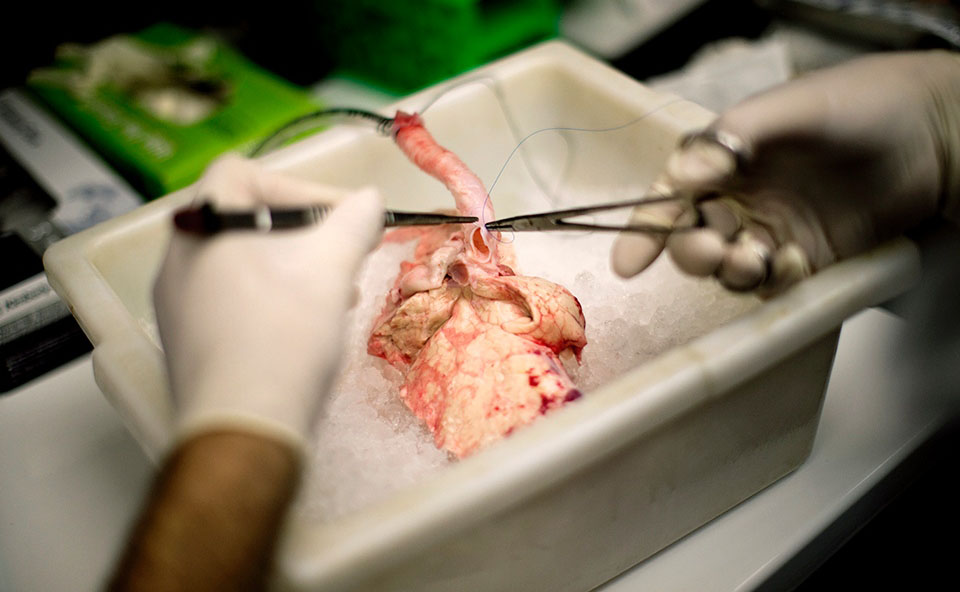When we first heard about the EHang 184 drone, we thought it was a joke. A drone that will carry humans? Surely people were trying to take the idea of flying a drone like a Phantom from DJI and just make it bigger and jump on board! The idea had some promise, but really? Actually carry a human? Helicopters aren’t too far of a cousin to the idea so in the end, it could actually make some sense, we thought.
So we posted an image of the new prototype to our Instagram page and people quickly started to sound off on all kinds of things. Most loved the concept. But many just said, hey, isn’t this just a helicopter? It definitely can be debated. But regardless, this concept is one of a kind in this day and age and now the company that has created it is making even more waves.
Ehang, Inc., a Guangzhou, China-based company pulled the cloth off the Ehang 184 at the Las Vegas Convention Center during the CES gadget show. In a company video showing it flying, it looks like a small helicopter but with four doubled propellers spinning parallel to the ground like other drones. The electric-powered drone can be fully charged in two hours, carry up to 220 pounds and fly for 23 minutes at sea level, according to Ehang. The cabin fits one person and a small backpack and even has air conditioning and a reading light. With propellers folded up, it’s designed to fit in a single parking spot.
So what ever came to be from the drone? Well, the company is still around and now getting into the organ transportation business. That’s right, this could be the first organ delivery drone on the market.
We’ve learned through Engadget that it will develop and produce 1,000 copies of the drone for Lung Biotechnology PBC, a company that wants to manufacture lungs and other artificial organs. The biotech firm plans to station Ehang’s drone, which will be re-purposed as the “Manufactured Organ Transport Helicopter (MOTH),” outside its facility. Then, it will transport artificial organs to needy patients at hospitals, according to the news release.
The Ehang 184: The world’s first organ delivery drone?
The drone can carry a single person up to 10 miles at 65 miles per hour, “simply by entering a destination into its accompanying smartphone app.” For the new partnership, it would be re-purposed to carry organs, which Lung Biotechnology plans to manufacture using either pig-to-human xenotransplantation or stem-cell regeneration. The craft would fly pre-programmed flight plans to charging pad-equipped hospitals within the MOTH’s 10 mile delivery radius.
The idea of a smartphone controlled drone that transports xenotransplanted organs sounds like tech nirvana, and a noble cause, to boot. “Currently, organ transplants are limited by the number of brain-dead donors, which results in thousands of deaths on organ transplant waiting lists each year,” says the PR. However, this organ transplant network in the sky has some serious regulatory and physical realities to hurdle.
Transporting the organs
Let’s start with the artificial organs: They don’t exist yet. Lung Biotechnology is a legitimate firm with $700 million yearly sales that has invested a lot of money in transplantation-ready pig organs and teamed with Craig Venter, one of the first scientists to crack the human genome.
Nevertheless, nobody has reported research that could lead to artificial organs anytime soon. And when they do, the US Food and Drug Administration will have to sign off on them, a process that could also take years — so transportation is the least of its problems.

The other issue is the drone itself. As far as we can tell, it’s never test-flown its intended human-carrying mission, and we’ve only seen one short video (above) of the craft in flight at all. Even if EHang has made huge strides in developing the $200-$300,000 craft, there are massive regulatory hurdles.
A drone that size would have to be certified by the FAA, a process that can be costly and time-consuming, especially for an unknown entity like a drone. Finally, the FAA is considering rules that would completely ban heavy drones from flying over people, which pretty much kills the organ delivery business plan.
Read more from Engadget
